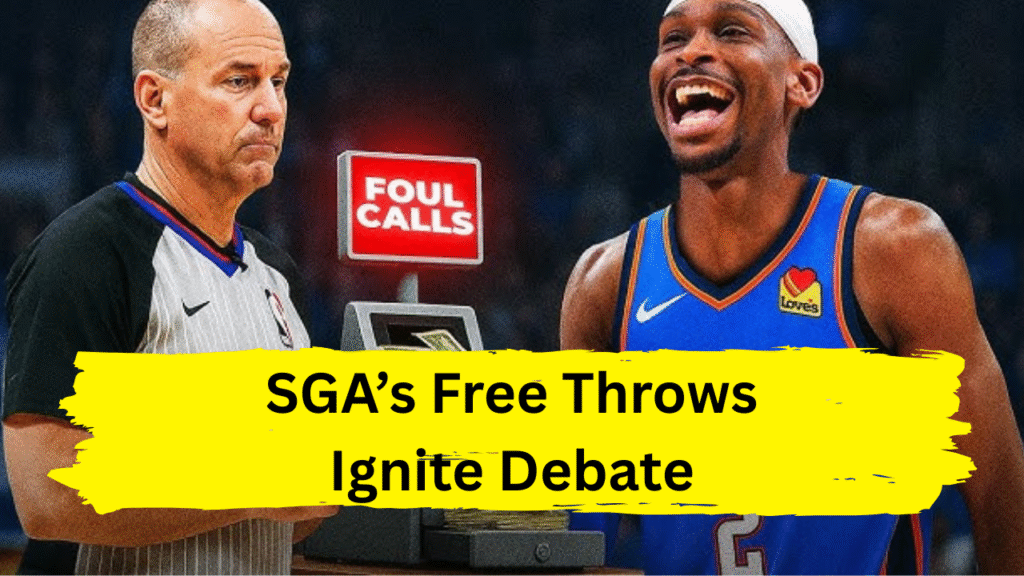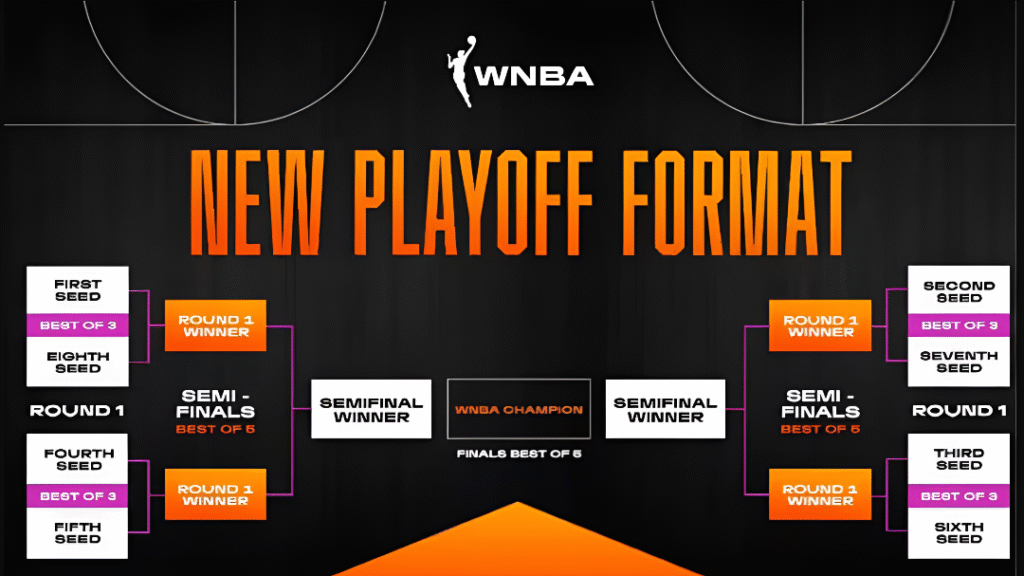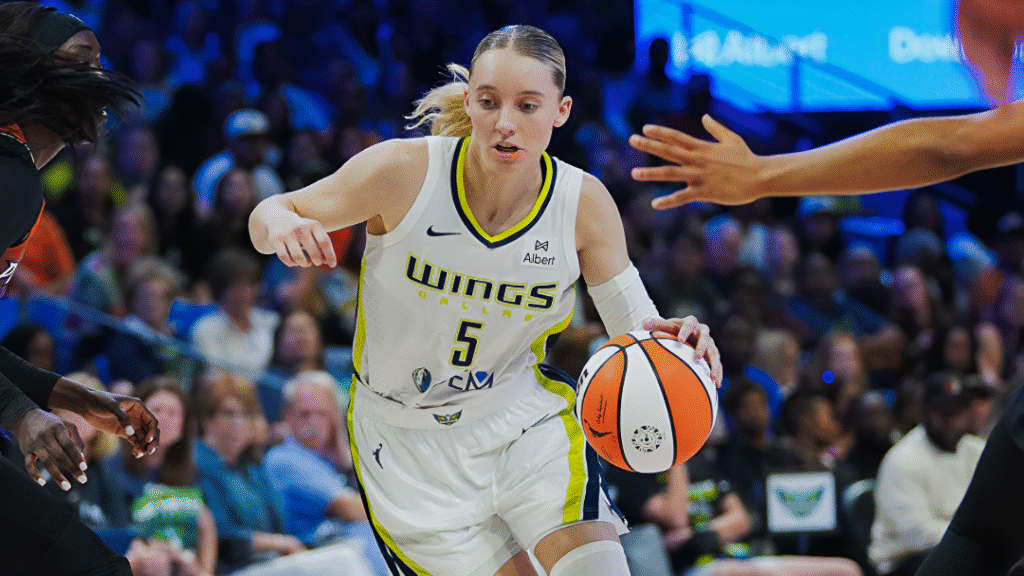On May 26, 2025, Shai Gilgeous-Alexander delivered a playoff masterpiece: 40 points, nine rebounds, 10 assists, and a clutch 12-for-14 performance from the free-throw line to propel the Oklahoma City Thunder to a 128-126 Game 4 victory over the Minnesota Timberwolves. Yet, even as the Thunder inched closer to the NBA Finals, the conversation around SGA’s brilliance split into two camps. Is he a generational MVP or a “free-throw merchant” gaming the system? The debate, amplified by social media and postgame critiques, reveals deeper tensions about how modern NBA superstars are perceived.
The Art of Drawing Contact
Gilgeous-Alexander’s ability to draw fouls is unmatched. Leading the league with 606 free-throw attempts during the regular season, he averaged 9.0 free throws per game—a number comparable to legends like Kobe Bryant and James Harden in their MVP years . Critics argue his style hinges on “foul baiting,” a term popularized to describe players who manipulate defenders and officials into granting calls. Detractors point to plays like his controversial drive against Detroit’s Ausar Thompson, where he appeared to initiate contact, resulting in an overturned offensive foul . Even Timberwolves star Anthony Edwards quipped, “It’s hard to shut him down. You can’t touch him at any time,” reflecting a sentiment shared by many opponents .
Yet, labeling SGA a “merchant” oversimplifies his game. His decelerative agility and balance—traits likened to a tennis player’s slide—allow him to create angles and absorb contact organically. As sports scientist Eric Leidersdorf noted, SGA’s “lower-body malleability” enables movements rare for a 6’6” guard, blending skill and athleticism to exploit defensive gaps . This isn’t mere trickery; it’s a calculated mastery of spacing and timing, honed through years of refining his craft.
The MVP Case: Beyond the Free Throws
Gilgeous-Alexander’s MVP credentials extend far beyond the charity stripe. Leading the NBA in scoring (32.7 PPG) while guiding the Thunder to a league-best 64-18 record, he embodies the two-way dominance voters traditionally reward . His playoff stats—28.7 PPG, 5.4 RPG, and 6.6 APG—underscore his ability to elevate in high-stakes moments, like his 40-point explosion in Game 4 . Teammate Jalen Williams highlighted their synergy: “Even the MVP needs a wingman,” acknowledging SGA’s role in elevating OKC’s young core .
Analysts also emphasize his efficiency. Shooting 51.9% from the field and 89.8% from the line during the regular season, SGA’s scoring isn’t reliant on volume. His 1,325 drives—the most in the NBA—demonstrate a relentless attack mentality, forcing defenses into impossible choices: contest aggressively and risk fouls, or give up easy buckets . As Thunder coach Mark Daigneault quipped, “His game is insanity—controlled insanity” .
The Double Standard of Scrutiny
Historically, prolific scorers face backlash for their free-throw reliance. Dwyane Wade’s 97 free throws in the 2006 Finals and James Harden’s prime-era foul-drawing tactics drew similar ire. Gilgeous-Alexander, however, faces a unique challenge: his success coincides with a league-wide push for reduced foul calls, making his style a lightning rod for frustration .
Yet, data challenges the “merchant” narrative. Coaches challenged just 0.7% of defensive fouls called on SGA’s drives this season, with only one overturned to an offensive foul . Late-game officiating reports also showed minimal errors favoring OKC, suggesting his free throws stem from legitimate playmaking rather than referee bias . Even his free-throw rate (.416) ranks below historical guards like Allen Iverson and Russell Westbrook during their MVP campaigns .
The Legacy Question
For Gilgeous-Alexander, the debate isn’t just about stats—it’s about legacy. Winning MVP (as oddsmakers heavily favor [-4000]) and leading OKC to its first title since 1979 would cement his place among elites . Yet, the “free-throw merchant” label lingers, a reminder that greatness often polarizes. As analyst Danny Chau observed, SGA’s style forces us to “see the game from a different angle,” blending artistry with opportunism in ways that challenge traditional definitions of athleticism .
Conclusion: A Star Redefining the Game
The tension between SGA’s MVP-caliber impact and the “merchant” critique reflects broader NBA evolution. In an era prioritizing skill and efficiency, his ability to bend defenses—and rules—isn’t a flaw but a feature. As the Thunder advance, one truth remains: love him or loathe him, Shai Gilgeous-Alexander is reshaping how superstars dominate. Whether through acrobatic finishes, icy free throws, or cerebral playmaking, his legacy will be written not by labels, but by wins. And right now, he’s winning big.


